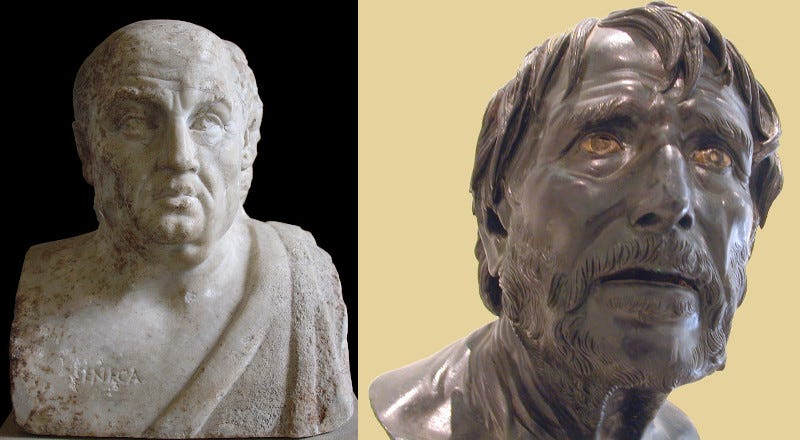Lucius Annaeus Seneca #158
The two lives of a Stoic sage
Dear friends of Daily Philosophy,
last week we had the launch of the Aristotle book, which you can now get here as an ebook or paperback:
https://www.amazon.com/dp/B09LVMMTZR
Please do consider leaving a review if you can. This is very important for the visibility of the book on Amazon. Here is a link that will bring you directly to the review form, so that you can finish the job in less than two minutes:
https://www.amazon.com/review/create-review/?ie=UTF8&channel=glance-detail&asin=B09LVMMTZR)
Many thanks for your review!
In the series on Critical Thinking basics, we have a new article about what it means to say that an argument is valid:
We use “valid” in many different ways in everyday life. We say things like “that’s a valid point,” or “his credit card number was not valid.” But in logic, “valid” has a very special meaning. Read on to learn how to use “valid” for arguments.
But what does “valid” mean?
In a valid argument, it is not possible that the conclusion is false when the premises are true. Or, in other words: In a valid argument, whenever the premises are true, the conclusion also has to be true.
Read the whole article here on Daily Philosophy!
Let me also remind you of the Facebook group, in which you can ask me questions, influence the choice of future article topics, comment on future book covers, and submit questions for the experts we interview:
https://www.facebook.com/groups/1018717508965189
You are all very welcome to subscribe to this group!
And now it’s time to get back to the Stoics.
The Two Senecas
Seneca (4 BC - 65 AD) is perhaps the most complex and confusing of the ancient Stoic philosophers. Not only were there two people of the same name, Seneca the Elder (the father of the philosopher, himself a writer and politician) and Seneca the Younger (the one we are talking about); but Seneca the Younger himself often seems to be a composite of a number of entirely different personalities.
Look at these two. The left one is a picture of what Seneca (the Younger, the Stoic philosopher) might actually have looked like.
The right image is sometimes thought to depict Seneca, but probably doesn’t. It is known as an image of “pseudo-Seneca.”
I’ve always thought that these two busts beautifully capture the different faces of Seneca. The second, good-looking, tortured one, as the image he might have had of himself: the troubled philosopher, suffering, but always keeping his eyes firmly fixed on the better life. The first one, a conservative and sometimes shifty old man, well-fed, comfortable in his privileged life: the man that others might have seen when they looked at him.
Keep reading with a 7-day free trial
Subscribe to Daily Philosophy to keep reading this post and get 7 days of free access to the full post archives.


